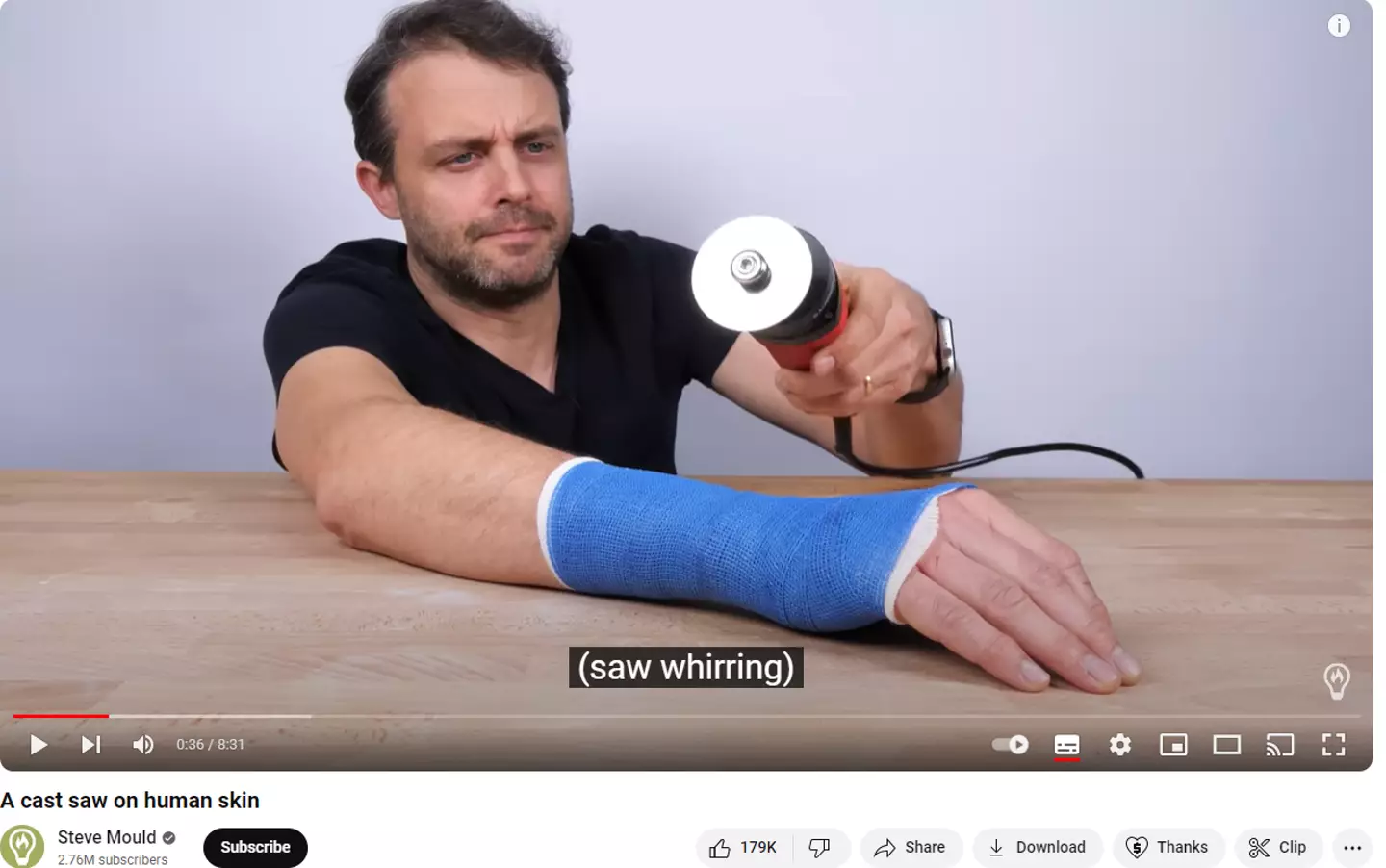
If you've ever broken a bone and had a cast fitted, you probably looked forward to having your cast taken off with both eagerness and a little apprehension.
After all, there's only one really quick way to get a cast off - using a cast saw, a little circular saw blade that looks like something a crazed doctor would wield in a horror movie.
What's remarkable about these saws, though, is that they never seem to cut the skin under the cast while cutting, almost as if the doctors using them are insanely high-skilled and precise.
Now, they definitely are both those things, but a YouTube video from creator Steve Mould has explained in a lot more detail exactly why a cast saw doesn't ever cut your skin, and it's fascinating.
Don't worry, there's nothing gory to worry about here since the whole point is how safe these saws are, and explaining why.
Advert
Mould hired a slow-motion camera to film a whole bunch of shots of the saw interacting with different materials and his skin.
Perhaps the most important revelation is made very quickly - the fact that cast saws don't actually spin their blades, despite looking a lot like they do.

The video touches on a huge number of really technical details, but the point effectively boils down to how rigid and elastic a material is. As the blade scrapes on the surface, whether it's a bit of rubber or the skin on your arm, a more elastic surface just adapts to the oscillations.
Advert
This means that your skin will just ripple and move with the saw, rather than being ripped by it, something determined by a combination of how fast the tool oscillates, and what your skin's elastic limit is.
This means, to be clear, and as explained by Mould, that other oscillating tools could well move faster or have different blade types that would mean they do break skin, so don't do any foolish experiments at home!
Casts, by contrast, are mostly dried fibreglass and plaster, so they're really rigid and have little to no elasticity - hence they're able to be easily cut off by a simple saw.
So, for all the technical details, it's a pretty simple but fascinating explanation, and should reassure you next time you unfortunately need a cast for any reason.
